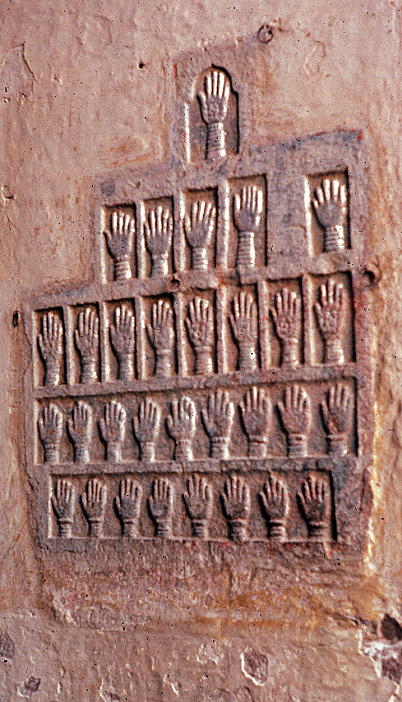Sati Handprints

Annotation
This image of the hands of Hindu widows and concubines of the ruling family of the Rajput state of Jodhpur, also known as Marwar, memorializes the devotion of these women and the high status of the men for whom the women committed sati. Indian princes, such as the maharajas of Jodhpur, who had yielded control of their defense, foreign relations, and communications to the English Company, were internally autonomous. Consequently, the Sati Regulation of 1829 did not apply to their territories until individual princes, frequently under informal pressure from the British, decided to prohibit sati within their states. In some Rajput states such as Jodhpur, self-immolation continued to occur among widows and concubines in the ruling families until the mid-1800s.
This source is a part of the Sati teaching module.
Credits
Photograph of handprints of satis impressed on a gateway when they left the Mehrangarh Fort in Jodhpur, Rajasthan on their way to commit self-immolation on their husbands’ funeral pyres outside the Fort.